| |
|
Forgotten Temples of Kashmir
Photo series Part-17 An effort to preserve and record Hindu cultural and religios heritage of Kashmir NARASTAN TEMPLE 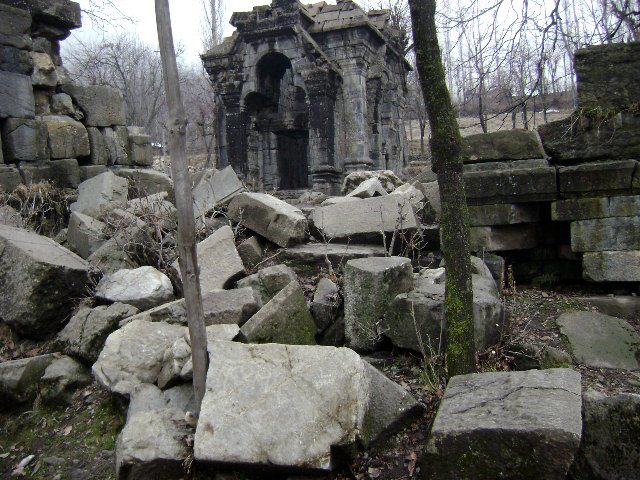
Exclusive images and report from a remote village in Kashmir provided for Shehjarby Chander M. Bhat |
Notes and References: 1. Place Names in Kashmir by B.K.Raina & S.L.Sadhu, published by Bharatiya Vidya Bhavan, Mumbai & Indira Gandhi National Centre for Arts, New Delhi, 2000. 2. Encyclopedia: Kashmiri Pandit: Culture & Heritage by C.L.Kaul, published by Ansh Publications, 2009. 3. Ancient Monuments of Kashmir by Ram Chand Kak, published by Aryan Books International, New Delhi, 2000. 4. Kalhan’s Rajatarangini….A Chronicle of the Kings of Kashmir, Vol: II by Stein, Aurel, published by Motilal Banarasi Dass, 1979. |

Front Side of the temple |
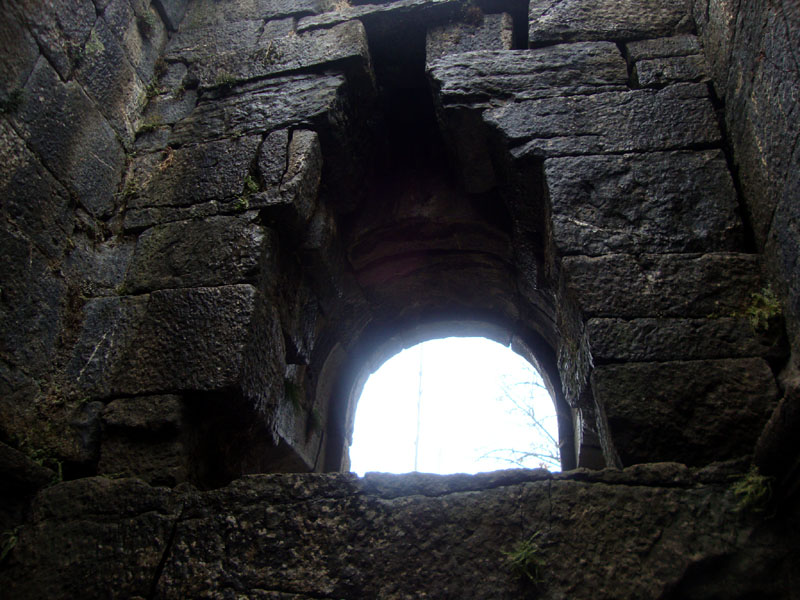
Inner Roof |
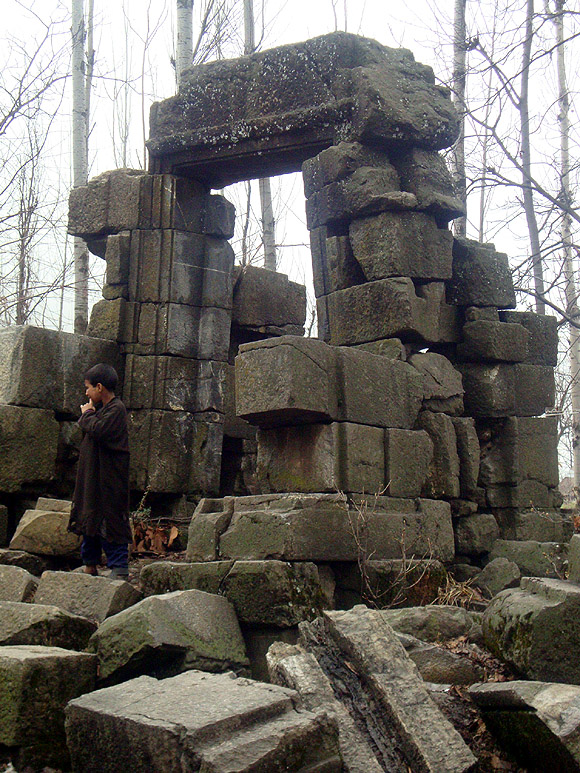
Main Entrance |

Narastan temple complex |

Back side of the temple |
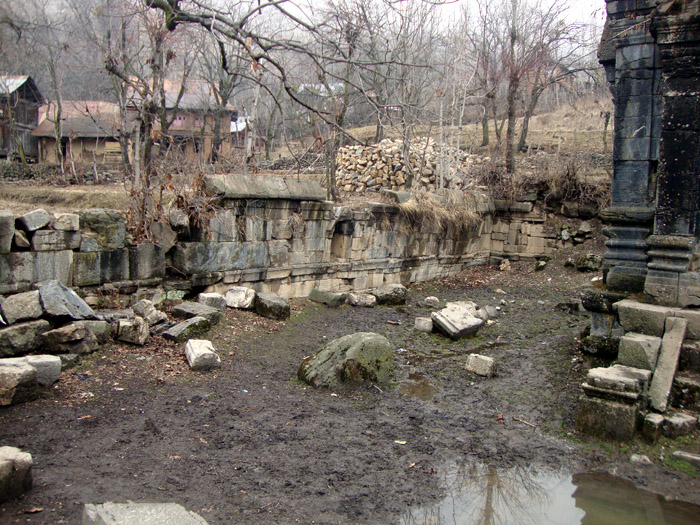
Courtyard of the temple |
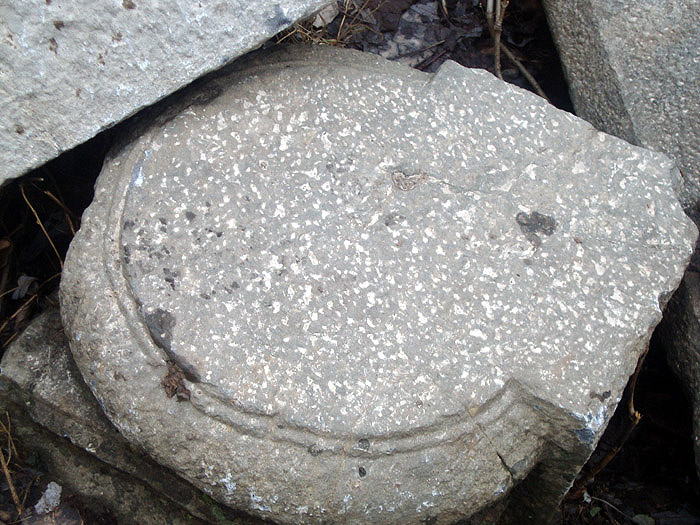
aBase of a stone piller |
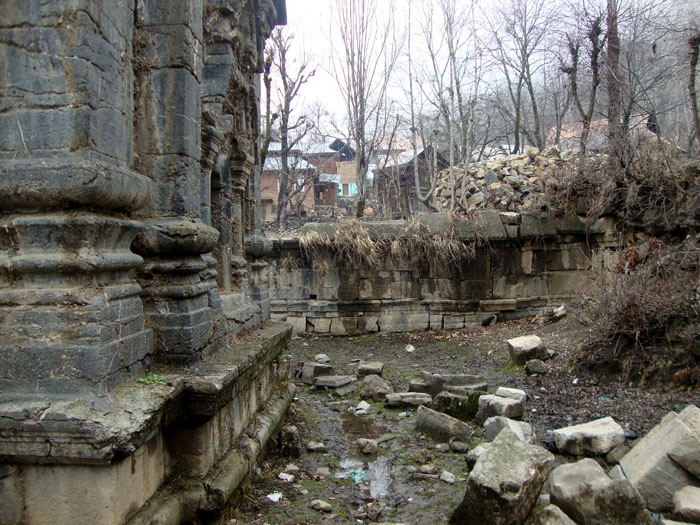
Right side of the plinth |
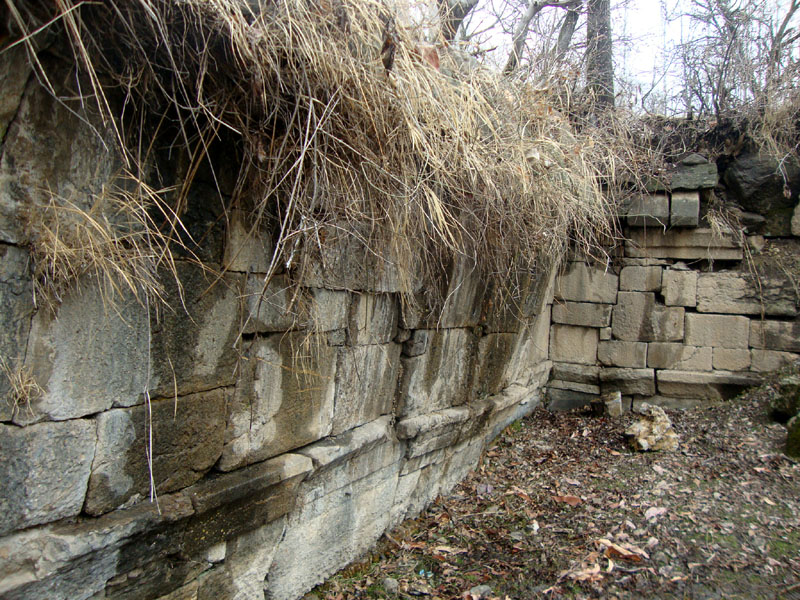
Temple Walls |
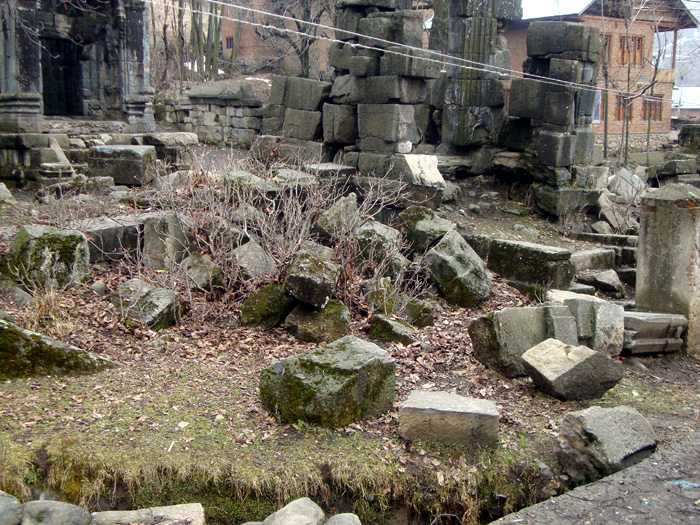

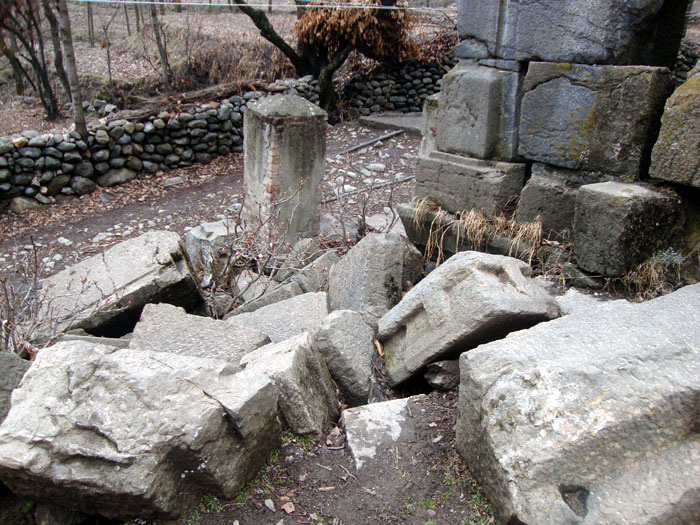
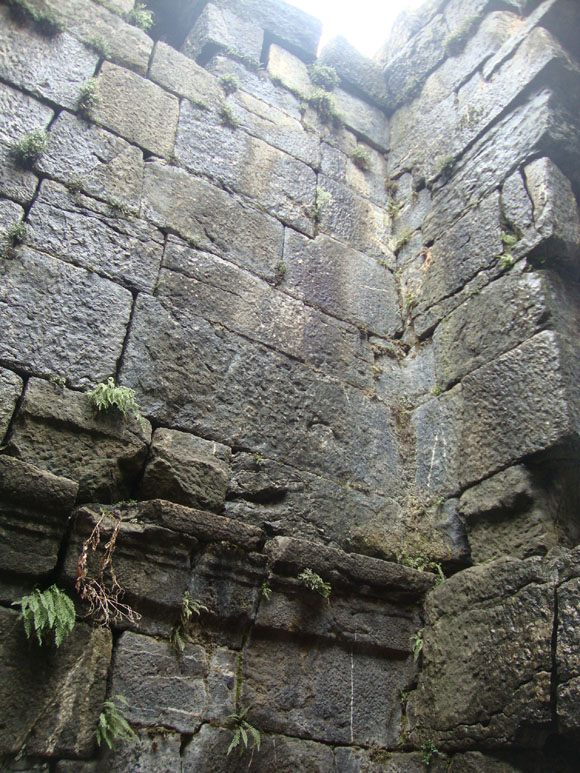
Temple ruins 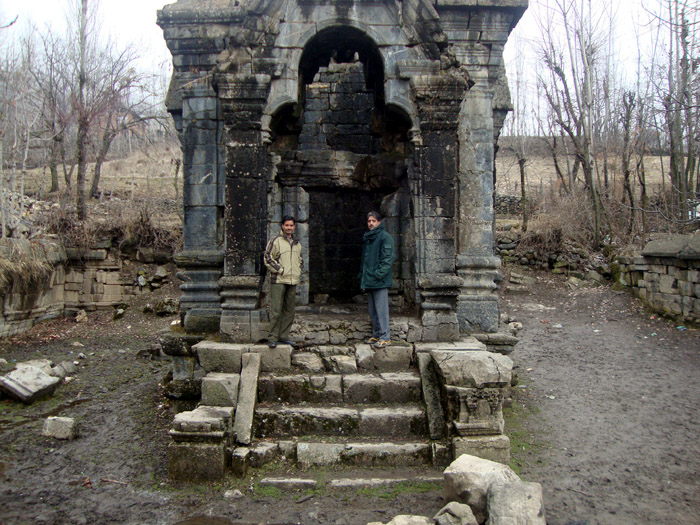
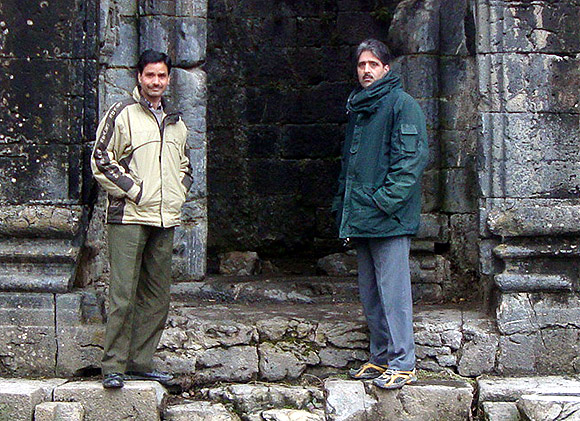
Author in the temple premises 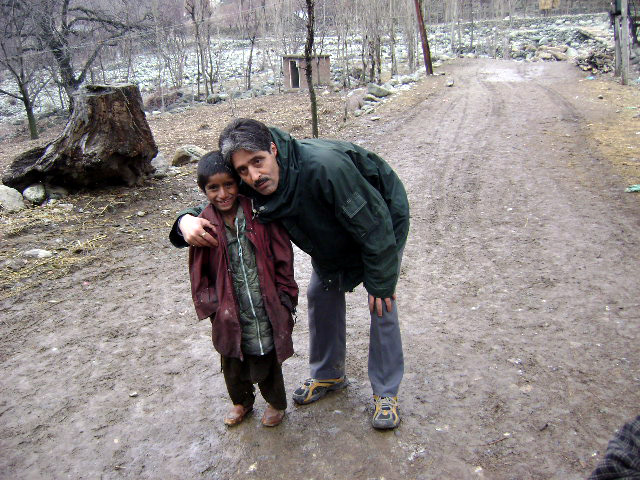
Author with a Gujjar Boy at Narastan |
| |
| |
 *Born on 20th March, 1960 in Murran a village in North Kashmir,
Chander M. Bhat is presently working as an Assistant Supdt. Posts, in
Department of Posts, Govt. of India. His articles regarding Posts and of
non-political nature stand widely published in various papers and
magazines of the country. A booklet 'How to Collect Stamps" published by
the Department of Posts, has earned him genuine accolades. He worked on
the project of tracing the roots of his co-villagers and of the village
Murran, resulting into the culmination of a widely acclaimed book
"Murran -My Village". Man with depth, Chander M. Bhat has also another
book, "Ocean by Drops" (collection of poems) in his vase having colorful
poems. His book "Ancient History of Jammu and Kashmir", confirms his
researching capability. Various research papers like "The Splendor that
is Amarnath" and "Vitasta" The Sacred River of Kashmir" are valuable
additions to his works that has proved very fruitful and guiding force
in the exile period of Kashmiri Pandits community of which the author is
also a member.
*Born on 20th March, 1960 in Murran a village in North Kashmir,
Chander M. Bhat is presently working as an Assistant Supdt. Posts, in
Department of Posts, Govt. of India. His articles regarding Posts and of
non-political nature stand widely published in various papers and
magazines of the country. A booklet 'How to Collect Stamps" published by
the Department of Posts, has earned him genuine accolades. He worked on
the project of tracing the roots of his co-villagers and of the village
Murran, resulting into the culmination of a widely acclaimed book
"Murran -My Village". Man with depth, Chander M. Bhat has also another
book, "Ocean by Drops" (collection of poems) in his vase having colorful
poems. His book "Ancient History of Jammu and Kashmir", confirms his
researching capability. Various research papers like "The Splendor that
is Amarnath" and "Vitasta" The Sacred River of Kashmir" are valuable
additions to his works that has proved very fruitful and guiding force
in the exile period of Kashmiri Pandits community of which the author is
also a member.Presently the author is working on "OOL - THE NEST" a six volume project on all the 595 (each volume of about 2500 pages)Kashmiri Pandit villages of Kashmir. |
Wednesday, February 13, 2019
Forgotten Temples of Kashmir
Subscribe to:
Post Comments (Atom)
No comments:
Post a Comment